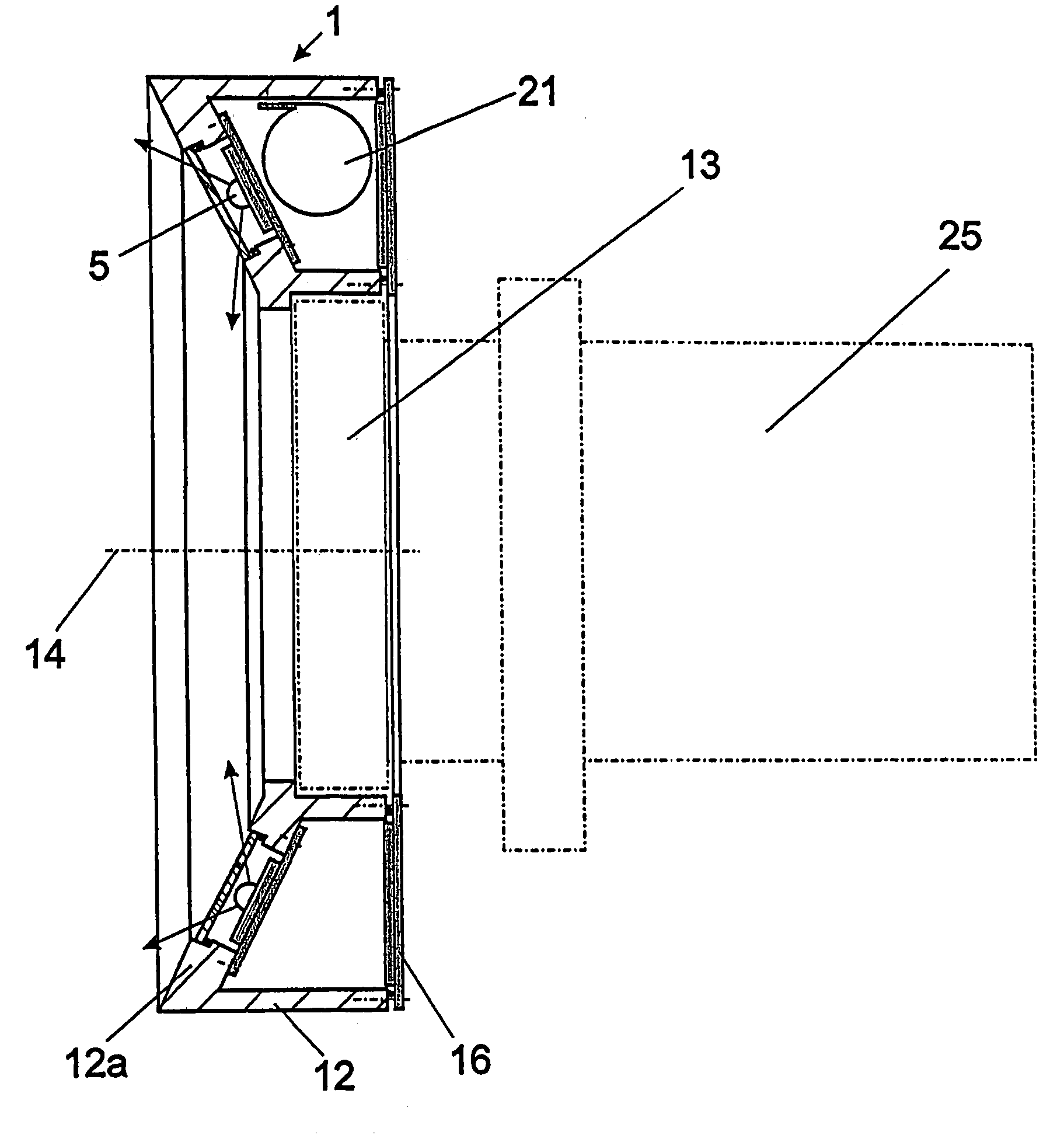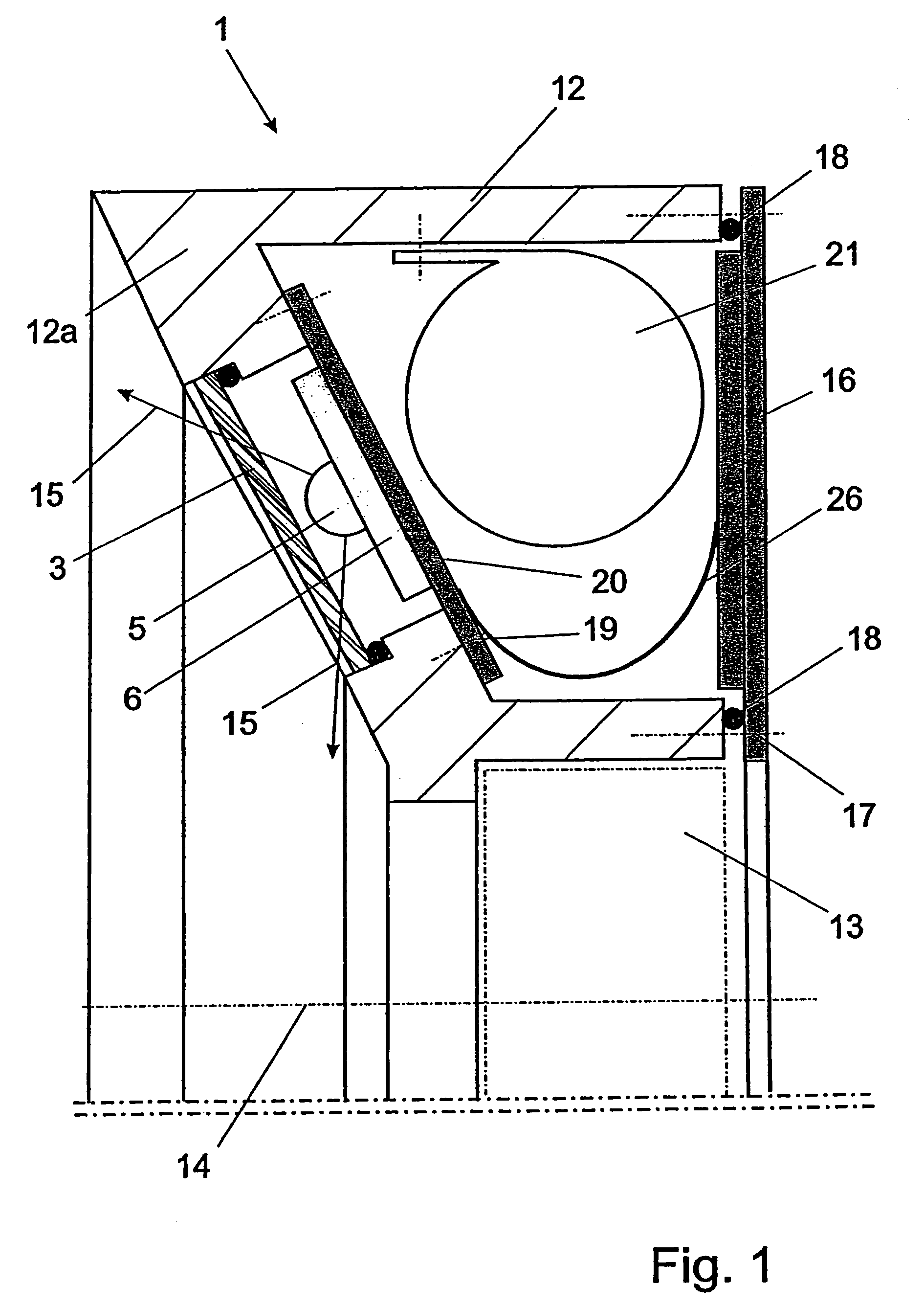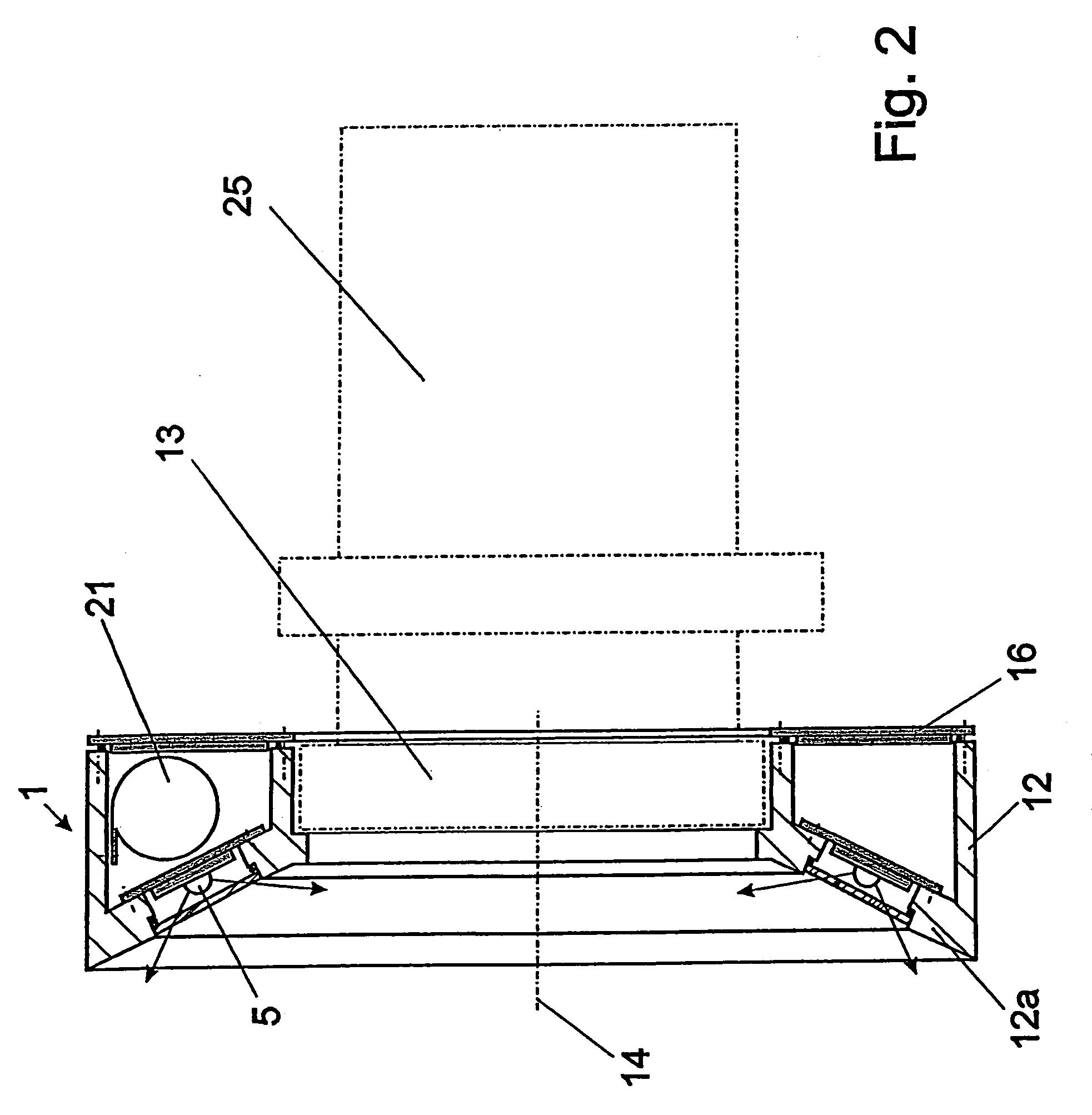Lamp for an underwater camera
- Summary
- Abstract
- Description
- Claims
- Application Information
AI Technical Summary
Benefits of technology
Problems solved by technology
Method used
Image
Examples
Embodiment Construction
[0022]The LED lamp 1 shown in FIG. 5, a minimum of three of which form an underwater lamp for shots in the macrorange consists of a bowl-type lamp body 2 whose open side is covered by a window 3. An O-ring 4 seals the area between the lamp body 2 and the window 3. The light source is a diode emitting white light 5 that has an output of 1 watt in the embodiment described here. The LED lamp can alternatively be sealed by welding because the LED lamps need not be replaced. The light-emitting diode 5 is mounted to a cooling plate 6 that contacts the lamp body 2 via a cooling paste 7. This allows rapid heat removal from the light-emitting diode 5 to the lamp body 2 that preferably consists of aluminium. The light-emitting diode 5 is surrounded by a reflector 8. The lamp body 2 comprises a tapped hole 9 for fastening the LED lamp 1 to the outer side of a holding ring 24 (FIG. 4) that can be detachably mounted to the front side of the housing of an underwater camera 25 and is arranged conc...
PUM
 Login to View More
Login to View More Abstract
Description
Claims
Application Information
 Login to View More
Login to View More - R&D
- Intellectual Property
- Life Sciences
- Materials
- Tech Scout
- Unparalleled Data Quality
- Higher Quality Content
- 60% Fewer Hallucinations
Browse by: Latest US Patents, China's latest patents, Technical Efficacy Thesaurus, Application Domain, Technology Topic, Popular Technical Reports.
© 2025 PatSnap. All rights reserved.Legal|Privacy policy|Modern Slavery Act Transparency Statement|Sitemap|About US| Contact US: help@patsnap.com



